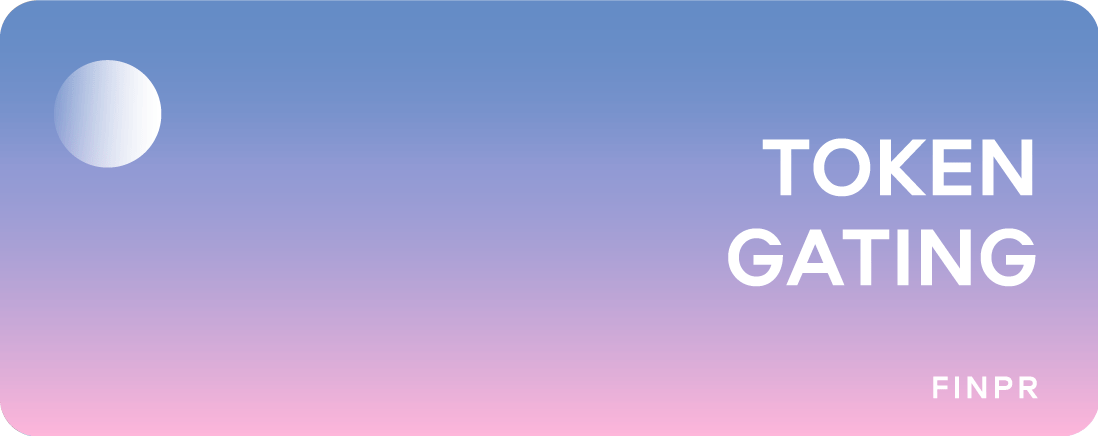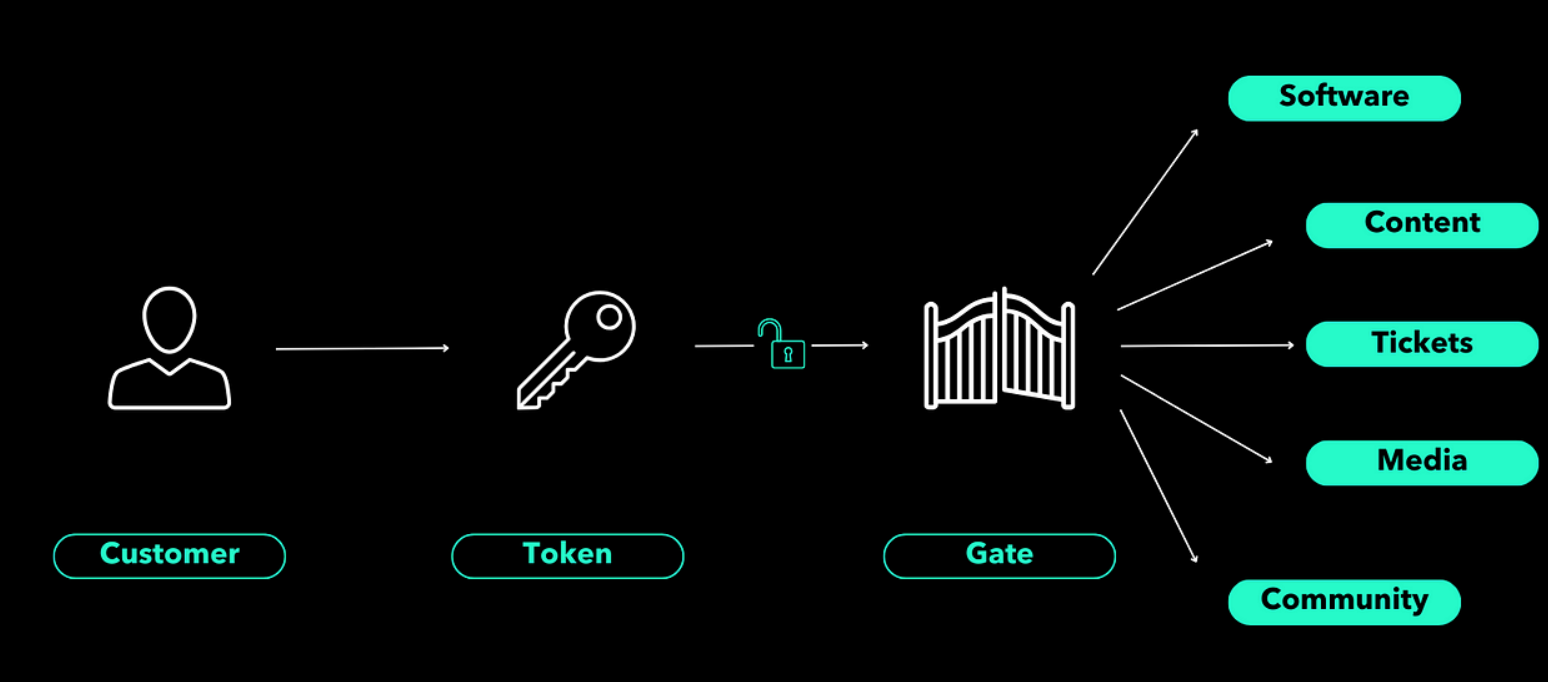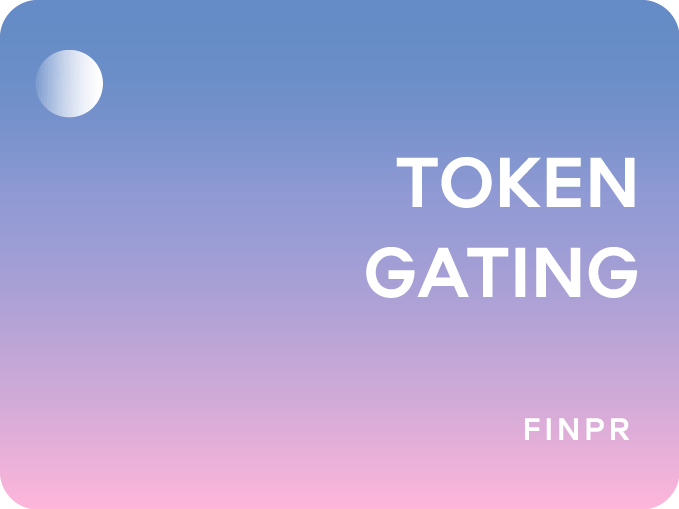
Imagine a digital key that unlocks exclusive online experiences — this is token gating in action. As blockchain technology and NFTs pave the way for new methods of access control, token gating is redefining membership, security, and engagement in the ever-evolving digital landscape.
Understanding Token Gating
Token gating is a transformative method that leverages blockchain technology to control access to digital or even physical resources by verifying the ownership of specific tokens. Essentially, it creates an exclusive “gate” that only allows entry to users who possess the requisite digital asset, whether that’s a fungible token, NFT, or even a unique, non-transferable token. This process not only elevates the perceived value of the tokenization itself but also deepens the connection between creators, brands, and their most loyal audiences.
Fundamental Concepts
Before diving into token gating itself, it’s essential to understand the building blocks behind it. In the blockchain ecosystem, tokens serve as digital representations of value or ownership. They can come in many forms:
- Fungible Tokens: Such as ERC-20 tokens, which are interchangeable and used for various purposes including payments and rewards.
- NFTs: Unique digital assets that can represent anything from artwork to exclusive membership passes. NFTs are particularly popular for token gating due to their ability to confer verifiable ownership and scarcity.
What is Token Gating?

Token gating applies these concepts to control access to content, communities, or events. For example, a musician might release an album exclusively to fans who hold a special NFT, or a brand may offer VIP access to a private online community only for token holders. In each case, the token acts as a digital key — if your wallet shows that you hold the required token, access is granted; if not, the gate remains closed. This mechanism creates a sense of exclusivity and rewards loyal supporters, while also opening new avenues for direct monetization and community building.
Technical Mechanisms Behind Token Gating
At its core, token gating relies on smart contracts — self-executing code stored on the blockchain. When a user attempts to access gated content, their digital wallet is automatically checked by these smart contracts to verify the presence and quantity of the specific token required. Here’s a simplified breakdown of the process:
- Token Issuance: Creators mint tokens (whether NFTs or fungible tokens) that represent access rights or membership.
- Wallet Connection: Users connect their digital wallets to the platform or decentralized application (dApp).
- Verification: Smart contracts query the blockchain to verify that the connected wallet holds the necessary token. This step often involves a secure, gasless transaction where the user’s signature confirms ownership.
- Access Control: If the verification is successful, the smart contract automatically grants access to the exclusive content or service. If not, access is denied.
This decentralized and automated process not only reduces the need for intermediaries but also enhances security by ensuring that the access criteria are both transparent and tamper-proof.
The Impact of Token Gating
By integrating token gating, creators and brands can offer personalized, secure, and exclusive experiences. This method strengthens community ties, boosts engagement, and provides new revenue streams through direct monetization—all while leveraging the robust security and transparency inherent to blockchain technology.
Practical Applications of Token Gating
1. Exclusive Content and VIP Access
- Entertainment & Music: Artists and musicians can issue NFT passes or tokens that grant holders access to unreleased tracks, behind‐the-scenes footage, or private concerts. For example, platforms like Crossmint have enabled luxury brands and high-profile artists to create token‐gated experiences, ensuring that only verified token holders can attend exclusive live events or view special content
- Digital Art & Collectibles: Artists use token gating to offer early access to digital galleries or special editions of artwork. This not only heightens the perceived value of the art but also deepens engagement within the community. Similar strategies have been seen in NFT communities where ownership of a token can serve as a membership card for exclusive drops
2. Online Communities and Social Platforms
- Private Forums and Discord Channels: Many Web3 projects and creators establish private chat rooms or forums that are accessible only to token holders. This helps foster a sense of exclusivity and community among dedicated fans. Platforms like Coinbase and Ledger have highlighted the utility of token gating in creating “holders-only” spaces where premium discussions and content are shared
- Membership & Loyalty Programs: Brands are beginning to integrate token gating into their loyalty programs. By requiring customers to hold a branded token, companies like Starbucks (with its experimental NFT-based loyalty programs) can offer VIP benefits such as early access to products, special discounts, or members-only events. This approach not only increases customer engagement but also enhances the overall value of the token as it becomes a part of a broader ecosystem
3. Gaming and Virtual Worlds
- In-Game Benefits: In the gaming sector, token gating can control access to exclusive in-game items, levels, or beta tests. For instance, game developers can require that players hold a particular NFT or token to unlock unique avatars or rare virtual items. This can drive both in-game economy and overall engagement by ensuring that certain benefits are reserved for invested players
- Virtual Events in the Metaverse: Virtual worlds and metaverse platforms (like The Sandbox or Decentraland) use token gating to create restricted areas where only token holders can interact, build, or participate in special events. This model enhances the exclusivity and sense of ownership among users while also opening new monetization avenues for creators.

4. Education and Professional Development
- Token-Gated Courses and Certifications: Educational platforms are increasingly adopting token gating to restrict access to premium courses, webinars, or digital libraries. For instance, a blockchain educational portal might require students to hold a specific token to unlock advanced courses or exclusive seminars. This not only rewards early adopters and engaged learners but also helps institutions monetize their expertise
5. Real-World Event Ticketing and Access Control
- Event Ticketing: Beyond the digital realm, token gating is revolutionizing event ticketing. Organizers can issue NFTs that function as tickets, providing not only access to concerts, festivals, or conferences but also additional perks like backstage passes or merchandise discounts. For example, initiatives involving platforms like Ticketmaster now allow artists to token-gate real-life events, ensuring secure and verifiable entry without traditional paper tickets
- Enhanced Security and Fraud Prevention: By using blockchain for token verification, event organizers can significantly reduce counterfeit tickets and scalping. Each token is securely tied to a user’s digital wallet, meaning that access is granted only to those who can prove token ownership, enhancing both security and user trust
Additional Considerations
Practical implementations of token gating typically involve:
- Smart Contracts: These are used to automate the verification process. When a user connects their digital wallet to a platform, the smart contract checks if they hold the required token before granting access.
- User Experience: Many platforms integrate token gating seamlessly to ensure that the process — often involving a simple wallet connection and gasless transactions — is user-friendly and secure.
- Regulatory and Compliance Aspects: Especially in sectors like finance or healthcare, token gating must comply with local regulations. Solutions like those provided by ComPilot offer integrated compliance tools to manage these challenges effectively
Benefits of Token Gating
Token gating offers a range of compelling advantages for creators, brands, and users alike by leveraging blockchain’s inherent strengths. Here are some key benefits:
1. Enhanced Security and Transparency
Token gating relies on smart contracts and blockchain verification to ensure that only verified token holders gain access to exclusive content or services. This reduces the risk of fraud and unauthorized access while providing an immutable record of ownership.
2. Exclusivity and Scarcity
By restricting access to those who hold specific tokens, token gating creates a sense of exclusivity. This scarcity not only increases the perceived value of the token but also strengthens the bond between creators and their most dedicated supporters. Exclusivity can drive demand, encouraging collectors and fans to hold on to or acquire tokens for special privileges.
3. Increased Engagement and Community Building
Token gating fosters tighter-knit communities by rewarding loyal members with unique benefits. Whether it’s access to private forums, VIP events, or specialized content, token-gated experiences motivate users to remain engaged and active. This level of interaction often translates into stronger brand loyalty and a more vibrant community.
4. Direct Monetization Opportunities
Creators and businesses can generate additional revenue streams by offering token-gated services or premium memberships. Rather than relying solely on traditional advertising or subscription models, token gating allows for direct monetization through the sale of exclusive tokens, membership passes, or access rights.
5. Personalization and Customization
Token gating enables the delivery of tailored experiences. Brands can customize content, offers, and experiences based on the specific tokens a user holds, ensuring that the interaction feels personal and rewarding. This targeted approach can lead to higher customer satisfaction and more meaningful engagement.
6. Data-Driven Insights
Since access is granted based on token ownership, businesses can gather valuable data on user behavior and preferences. These insights help refine marketing strategies, improve product offerings, and optimize community engagement by understanding which exclusive perks are most valued by token holders.
Summing Up
Ultimately, token gating is a strategic tool that empowers brands to reward loyal supporters and foster deeper community connections. With blockchain ensuring a tamper-proof record of ownership, token gating not only secures digital spaces but also transforms user engagement into a dynamic, monetizable asset. Its growing adoption signals a new era in personalized digital experiences.




